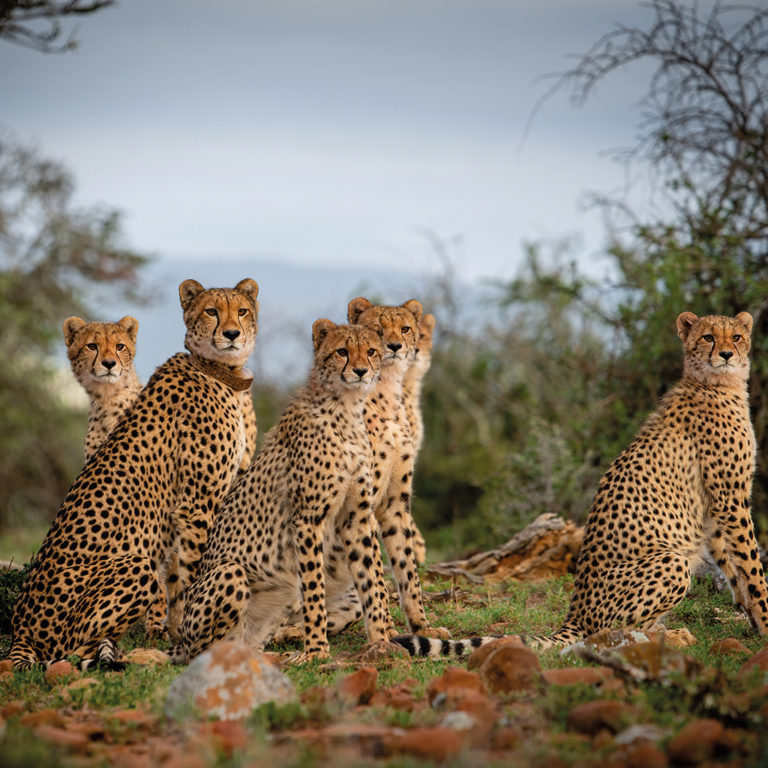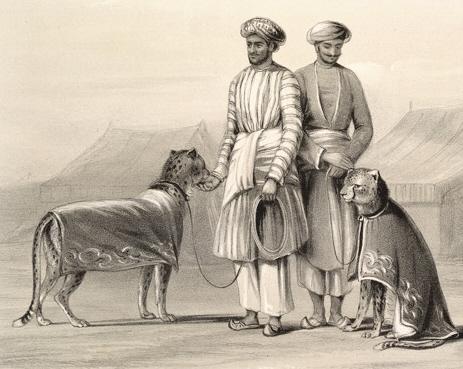India’s initial plan of reintroducing eight cheetahs into the heart of India was recently expanded after the government launched the ‘Action Plan for Introduction of Cheetah in India‘ on 5 January 2022, which aims to reintroduce 50 cheetahs over the next five years.

Cheetahs in India?
Contrary to popular assumptions, cheetahs are not exclusive to Africa, but once roamed the plans of India too. There is still a remaining wild population of the Asiatic cheetah in Iran.

Cheetahs were once widespread in India and were often used for sport by the Mughul Empire in the 16th century. Picture: Wikimedia Commons / Emily Eden
So then why doesn’t India just get cheetahs from Iran? This could avoid problems of Africa’s cheetahs not being well adapted to the subcontinent, and a reduced risk of bringing in diseases.
India did have a deal with Iran to source Asiatic cheetahs in the 1970s, but this plan fell through when the Shah of Iran was overthrown. Since then, the plan was scrapped, but India’s government hopes to reintroduce cheetahs to reinvigorate its grasslands and savannahs, which are often referred to as ‘wastelands’ by policymakers.
‘Project Cheetah aims to bring back the only extinct large mammal in independent India – the cheetah,’ the opening message for India’s Action Plan reads. ‘The project is not only about the charisma of the cheetah, but more for its role to restore the balance within ecosystems it inhabited.
India’s Ministry of Environment, Forest and Climate Change aims to use this as an opportunity for eco-development and eco-tourism to enhance local, rural communities. 12-14 cheetahs have reportedly been soured so far, from various parks, reserves and sanctuaries, mainly from South Africa and Namibia.
Where & when?
The reintroduction process was expected to start in India by November 2021, but this plan got derailed after the Omicron covid variant was identified in South Africa.
Per India’s Action Plan, 12-14 cheetahs are set to be released in Kuno National Park, which is already home to 200 leopards, situated in the heart of India. The dedicated protected area spans an area of 748 km2 but forms part of a larger habitat of 6 800 km2.

The landscape of Kuno National Park. Picture: Action Plan for Introduction of Cheetah in India
In terms of prey in the vicinity, there is a large population density of Chital, or spotted deer, with a population density of 38 individuals per km2.
The dedicated area also has reduced human pressures, where much of the village residents were relocated, and the report states that the area has the potential to hold up to 21 cheetahs. But, with restorative measures and proper management, the area can house up to 36 cheetahs.
But for now, the primary aim is to establish a free-ranging population in and around the dedicated Kuno National Park, which will be managed as a metapopulation with two or three other established populations in India. Occasional ‘immigrants’ will be brought in from Africa when needed.
Picture: David Niederberger/ Getaway Magazine
ALSO READ
South African cheetahs to be relocated to the heart of India














